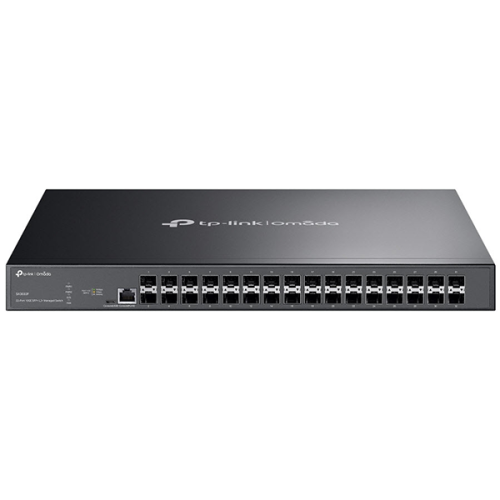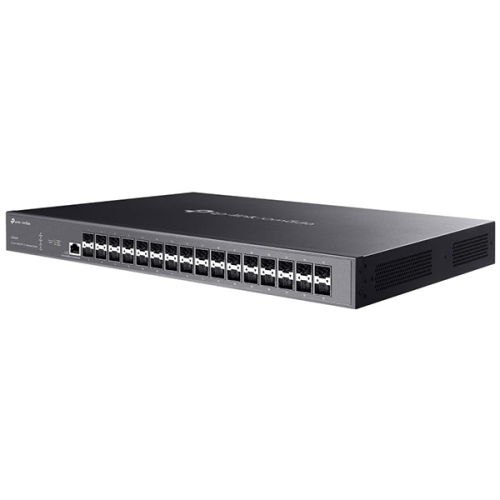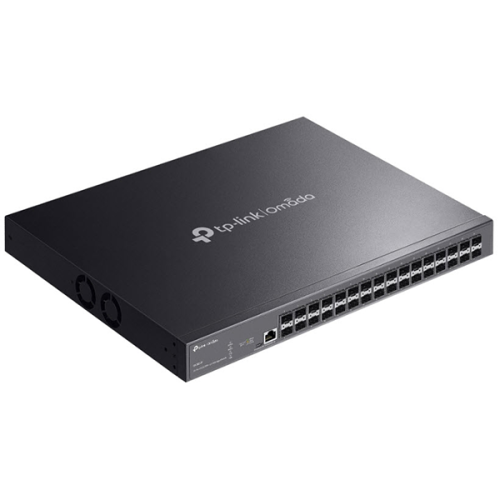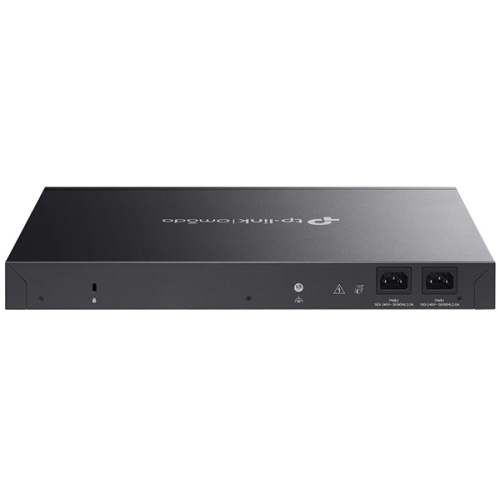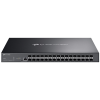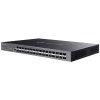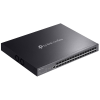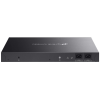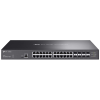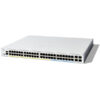TP-Link Omada 32-Port 10GE SFP+ L2+ Managed Switch (SX3032F)
-
- Ports 32× 1/10Gbps SFP+ Slots ,1× RJ45 Console Port, 1× Micro-USB Console Port
- PoE+ Budget –
- Switching capacity 640 Gbps
- Forwarding Rate 240 Mpps
- MAC Address Table 32K
- PoE capability –
- Warranty Lifetime
- Datasheet
- เลือกดู Switch TP-Link รุ่นอื่น
The TP-Link Omada 32-Port 10GE SFP+ L2+ Managed Switch (SX3032F) is a high-performance network device designed for demanding environments, offering advanced features and robust capabilities.
Overview of the TP-Link Omada SX3032F
This switch is a core component within the TP-Link Omada Software Defined Networking (SDN) platform, which allows for centralized management of various network devices like access points, switches, and routers. The SX3032F is specifically engineered to deliver 10 Gigabit Ethernet (10GE) connectivity, making it ideal for scenarios requiring high bandwidth and low latency, such as data centers, enterprise networks, and large-scale Wi-Fi deployments.
Key Features and Capabilities
- 32 x 10GE SFP+ Ports: The most prominent feature is its 32 SFP+ ports, each supporting 10 Gigabit Ethernet. This provides immense capacity for connecting high-speed servers, network storage, and other backbone devices. The SFP+ form factor allows for flexible fiber optic connections, supporting various distances and cable types.
- L2+ Managed Features: As an L2+ managed switch, it goes beyond basic Layer 2 (data link layer) functionalities. It offers a comprehensive suite of advanced features, including:
- Static Routing: Enables the switch to perform basic routing functions, improving network efficiency by directing traffic between different VLANs without needing an external router for simple configurations.
- VLAN (Virtual Local Area Network): Allows for network segmentation, enhancing security and improving broadcast domain management.
- QoS (Quality of Service): Prioritizes network traffic to ensure critical applications (e.g., VoIP, video conferencing) receive adequate bandwidth and low latency.
- IGMP Snooping: Optimizes multicast traffic by preventing it from flooding the entire network, which is crucial for efficient video streaming and IP TV services.
- Link Aggregation (LAG/LACP): Combines multiple physical links into a single logical link, increasing bandwidth and providing link redundancy.
- Spanning Tree Protocol (STP/RSTP/MSTP): Prevents network loops, ensuring network stability and availability.
- ACL (Access Control List): Provides granular control over network traffic based on various criteria, enhancing security.
- Port Security: Limits the number of MAC addresses on a port to prevent unauthorized devices from connecting.
- 802.1X Authentication: Offers robust network access control by authenticating users and devices before granting network access.
- Omada SDN Integration: Seamlessly integrates with the Omada SDN controller (hardware or software-based). This integration provides:
- Centralized Management: All Omada devices, including the SX3032F, can be configured, monitored, and troubleshooted from a single interface.
- Zero-Touch Provisioning (ZTP): Simplifies deployment by allowing automatic configuration of new devices once they are connected to the network.
- Intelligent Network Monitoring: Provides real-time insights into network performance, client statistics, and traffic patterns.
- Remote Access: Enables network administrators to manage the network from anywhere with an internet connection.
- Enterprise-Grade Hardware: Built with high-quality components for reliable and stable operation in demanding environments. It often features redundant power supply options (though specific models may vary) and efficient cooling systems to ensure continuous performance.
Ideal Use Cases
The TP-Link Omada SX3032F is particularly well-suited for:
- Data Center Top-of-Rack (ToR) Switching: Connecting high-density server racks to the core network.
- Enterprise Core/Distribution Layer: Acting as a high-speed backbone for large corporate networks.
- ISP (Internet Service Provider) Aggregation: Consolidating traffic from multiple access points or client devices.
- Large-Scale Wi-Fi Deployments: Providing high-bandwidth backhaul for numerous Wi-Fi 6/7 access points.
- High-Performance Computing (HPC): Supporting applications that require extremely fast data transfer.

